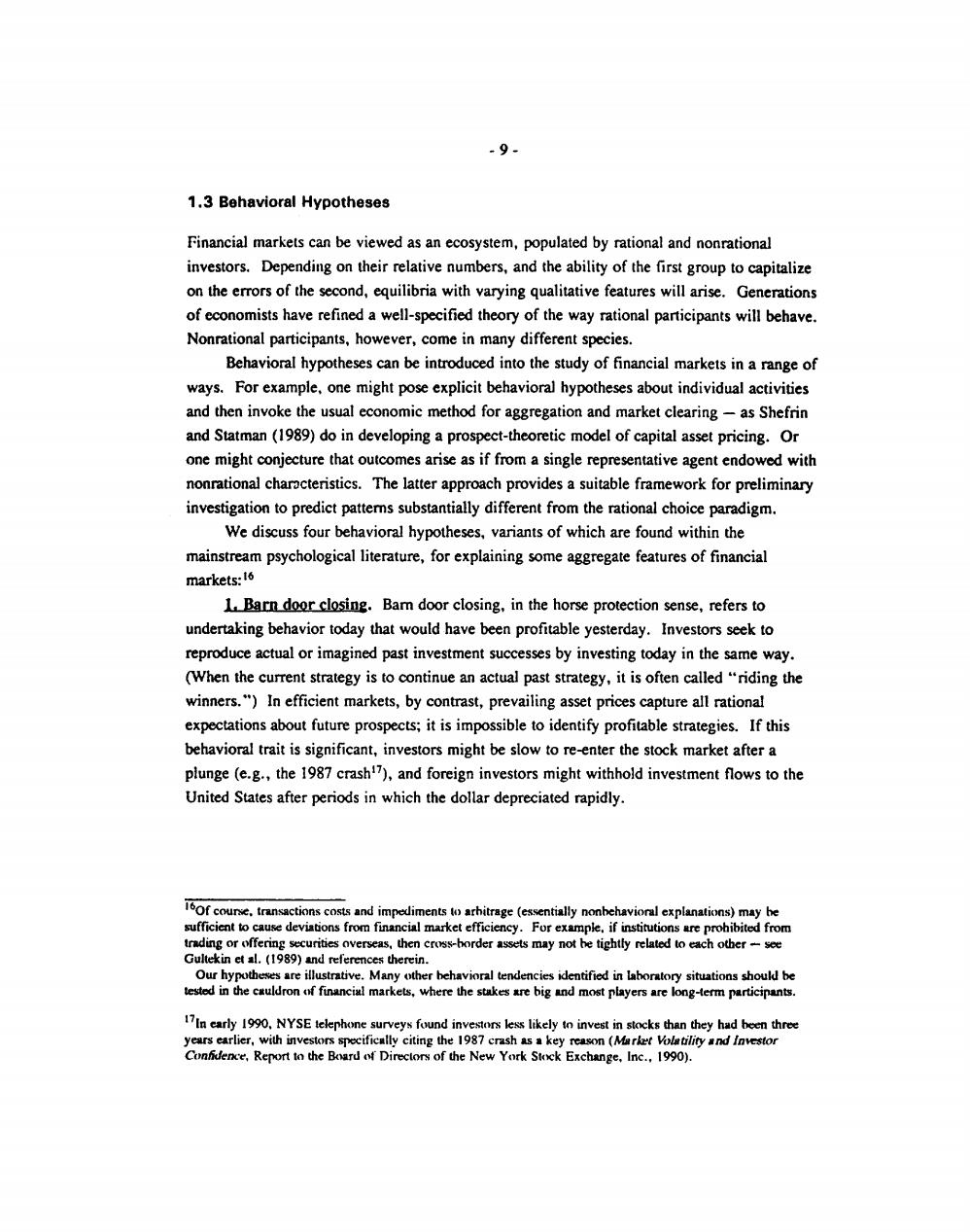正在加载图片...

.9- 1.3 Behavioral Hypotheses Financial markets can be viewed as an ecosystem,populated by rational and nonrational investors.Depending on their relative numbers,and the ability of the first group to capitalize on the errors of the second,equilibria with varying qualitative features will arise.Generations of economists have refined a well-specified theory of the way rational participants will behave. Nonrational participants,however,come in many different species. Behavioral hypotheses can be introduced into the study of financial markets in a range of ways.For example,one might pose explicit behavioral hypotheses about individual activities and then invoke the usual economic method for aggregation and market clearing-as Shefrin and Statman(1989)do in developing a prospect-theoretic model of capital asset pricing.Or one might conjecture that outcomes arise as if from a single representative agent endowed with nonrational charocteristics.The latter approach provides a suitable framework for preliminary investigation to predict patters substantially different from the rational choice paradigm. We discuss four behavioral hypotheses,variants of which are found within the mainstream psychological literature,for explaining some aggregate features of financial markets:16 1 Barn door closing.Bam door closing,in the horse protection sense,refers to undertaking behavior today that would have been profitable yesterday.Investors seek to reproduce actual or imagined past investment successes by investing today in the same way. (When the current strategy is to continue an actual past strategy,it is often called"riding the winners.")In efficient markets,by contrast,prevailing asset prices capture all rational expectations about future prospects;it is impossible to identify profitable strategies.If this behavioral trait is significant,investors might be slow to re-enter the stock market after a plunge (e.g.,the 1987 crash7),and foreign investors might withhold investment flows to the United States after periods in which the dollar depreciated rapidly. 1of cou trantions costs and impedimentsoarhitrage (essentialy nonbehavioral explanations)may be sufficient to cause deviations from financial market efficiency.For example,if institutions are prohibited from trading or offering securities overseas,then cross-border assets may not he tightly related to each other -see Gultekin et al.(1989)and references therein. Our hypotheses are illustrative.Many other behavioral tendencies identified in laboratory situations should be tested in the cauldron of financial markets,where the stakes are big and most players are long-term participants. 17In early 1990.NYSE telephone surveys found investors less likely to invest in stocks than they had been three years earlier,with investors specifically citing the 1987 crash as a key reason (Market Volatility and Investor Confiderce,Report to the Board of Directors of the New York Stock Exchange,Inc..1990)